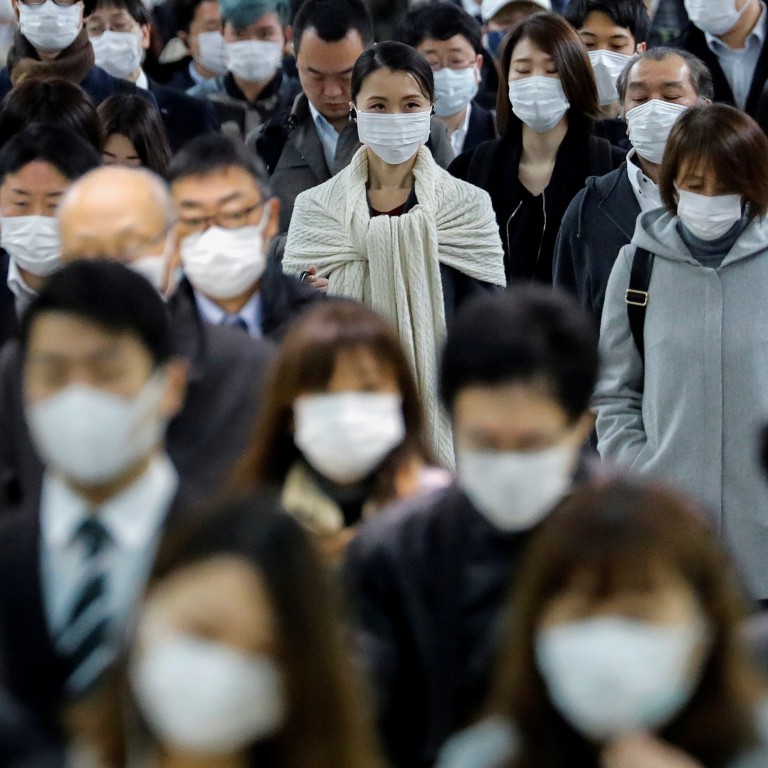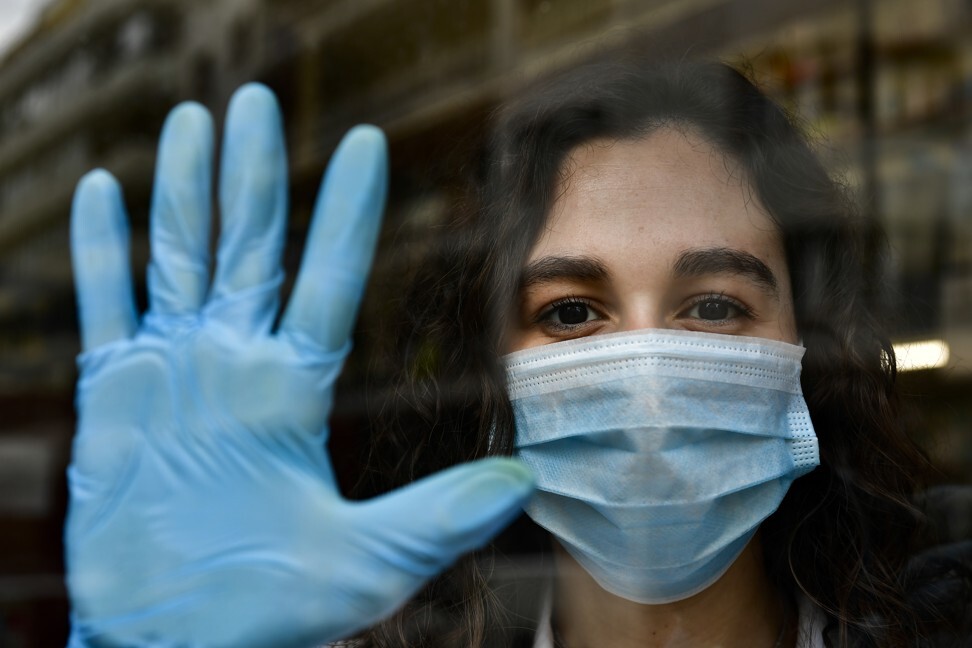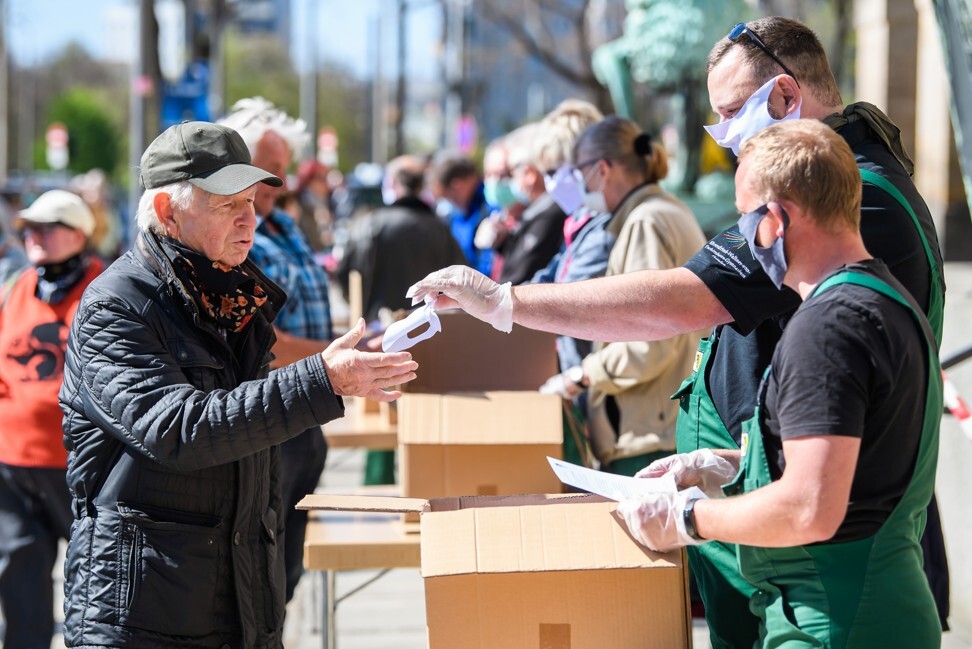
‘We’re dogs without tails’: how face masks affect human interaction – and what to do about it
- Half our face is hidden when we put a mask on and we lose many of the non-verbal cues we use to tell what a person is feeling or thinking
- One way to avoid confusion is to take time to ask people for clarification; it’ll slow down communications, but that could be a good thing
Smile, they say, and the world smiles with you. Unless you’re wearing a mask. Then the world can’t see your smile, much less smile back.
With it has come a removal of crucial visual cues that people have used for millennia to communicate, understand each other and negotiate space in the public arena.
“Our minds light on the face like butterflies on a flower, for it gives us a priceless flow of information,” Daniel McNeill wrote in The Face, his 1998 book on its significance throughout human history.
Here’s a partial inventory of the information that’s lost when a mask is put on. Smiles. Frowns. Lip movements. Crinkle lines at the mouth’s edge. Cheek twitches that indicate approval or disapproval. Reflexive gestures that collaborate with the eyes to say: hey, I mean no harm. Or: hey – back off.

“It’s not just covering us up. It’s blocking something. It’s a barrier to communication. Is she smiling? Sarcastic? Is she happy to see me? I can’t figure it out,” says Christie Cawley, a business adviser whose consultancy, Thrive, helps non-profits with business skills.
How to avoid skin problems from wearing a surgical mask in the heat
However legitimate, that still creates a potentially disorienting situation: instead of a fellow human coming openly toward you, we’re encountering each other with visual cues removed, like astronauts or deep-sea divers or hazmat removal teams.
“Different levels of smiles lead to perceptions of warmth, competence, trustworthiness, attractiveness, etcetera,” says Fan Liu, an assistant professor of decision sciences and marketing at Adelphi University in New York, whose research focuses on non-verbal communication. “These perceptions and characteristics significantly influence our daily social lives.”
We need to take time and ask people for clarification. It’ll slow down communications a little bit, which could be a good thing
Non-verbal cues, Liu says, play a central role in communication that we don’t always realise.
“When these cues are cut off, people are more likely to focus on outcome rather than process,” she says, and some nuances of human interaction may be lost.
No wonder. There’s a reason history’s greatest artists didn’t make their names painting shins or elbows or thumbs.
The face is the gateway to who we are, the front door to our humanity and individuality. We mouth off. We have face time (and FaceTime). We pay lip service and give each other lip. We grin and bear it. Are all these going by the wayside … at least for now?
There’s a reason, too, why masks suggest something surreptitious and nefarious. Covering pieces of the face is often presented as shorthand for mistrust or menace across modern culture, from historical literature (The Man in the Iron Mask) and comic books (Batman) to TV (The Lone Ranger), movies (The Mask) and music (The Stranger).

Such potent cultural cues can be activated, however subconsciously, when we cover our faces – even for the most legitimate (and protective) of reasons. A mask, in short, can be alienating no matter who is behind it – and particularly when there’s a power imbalance in the conversation.
Leah Lizarondo, co-founder and CEO of NGO 412 Food Rescue in the US city of Pittsburgh, says her team’s ability to show empathy has been impeded by its new contactless, mask-forward methods of dropping off food.
She recalls meal distributions at school bus stops over the past month – done with masks and, she laments, less humanity because of it.
“There’s something extremely surreal about dealing with someone when you can’t really smile. It’s exactly the opposite of what you want this exchange to be. You don’t want it to be a transactional exchange. You want it to be a relationship,” Lizarondo says.
“We’re trying so much to create analogues to that empathy. I’m not sure we’re there yet.”

Which raises the question: if this endures for weeks and months, what would those analogues be? If half of the facial radio signal is obscured by face-mask static, how do the messages punch through? Will new methods of socially distanced non-verbal communication emerge?
“The important point is not to rely on any one visual cue. Furrowed eyebrows could mean that a person’s angry, someone’s confused, someone doesn’t have glasses on and they’re squinting,” says Mary Inman, a psychology professor at Hope College in Michigan who studies people’s perceptions of discrimination.
“So, we need to take time and ask people for clarification. It’ll slow down communications a little bit, which could be a good thing. … if we go to [wearing] full masks continually, then we will be needing to slow down and clarify.”

You can bet on one thing: until that happens, things may be awkward. For now, though, we still have the eyes. Have you heard? They’re windows to the soul. But, alas, only to a point.
“The face is the focal point,” says Dan Everett, a linguist and sociology professor at Bentley College in Massachusetts. “Now we’ve lost the focal point of that kind of communication, it is going to add a layer of distance between us. It’s sort of like we’re dogs without tails now.”

